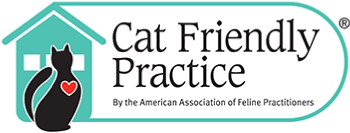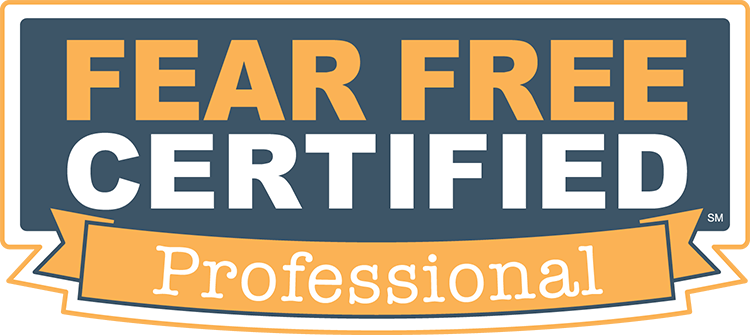Posts in Category: Harmony Animal Hospital News & Events
Protecting Your Companion Animals During a Heat Wave: Essential Safety Tips for Pet Parents
As Florida experiences a heat wave with temperatures soaring into the 90s, it’s crucial for pet parents to take extra precautions to ensure their companion animals remain safe. Here are some essential safety measures to help you protect them:
Ensure your companion animals have constant access to fresh, cool water. Hydration is key to helping them regulate their body temperature. Consider placing multiple water bowls around the house and yard, and refill them frequently.
Walk your companion animals early in the morning or late in the evening when temperatures are cooler. The asphalt and pavement can become extremely hot during the day, potentially burning your pet’s paws. Always check the ground temperature with your hand before setting out.
Even with the windows cracked, the temperature inside a car can rise to dangerous levels within minutes. Leaving companion animals in a parked car, even for a short period, can lead to heatstroke or even death.
Ensure your companion animals have a cool place to rest indoors. Use fans or air conditioning to maintain a comfortable temperature inside your home. If your pet is outside, provide shaded areas and consider using cooling mats or damp towels for them to lie on.
Heatstroke is a serious condition that can affect companion animals quickly. Symptoms include excessive panting, drooling, lethargy, vomiting, and uncoordinated movements. If you suspect your companion animal is suffering from heatstroke, move them to a cool area, offer water, and contact your veterinarian immediately.
Regular grooming helps to keep your companion animal’s coat free of mats, which can trap heat. However, avoid shaving your pet’s fur down to the skin, as their coat also provides protection from the sun.
By following these tips, you can help ensure your pets remain safe and comfortable during the extreme heat. Remember, your vigilance can make all the difference in preventing heat-related illnesses and ensuring your pets enjoy a healthy, happy summer. Stay cool, Florida!
Safety and Etiquette at the Vet
Pets’ attitudes toward arriving at veterinary, grooming, and boarding facilities vary widely. Some dogs dance through the front door, eagerly searching for snacks, while others appear so worried that we need to carry them inside. Cats, typically stressed, often attempt to hide, and small mammals and birds may show varying levels of interest or agitation. Every pet is an individual, just like us.
It’s especially endearing when dogs attempt to “check out” another dog, but it can be overwhelming for the other pet. Even when two dogs clearly want to play, another nearby pet might be disturbed by the extra activity. Cats hearing strange dogs playing nearby, even if they live with dogs of their own, often become very upset.
Considering this, it’s best to keep your animal close and not allow or encourage interactions with other pets. You never know if a pet is waiting for a routine wellness visit or is here due to illness or pain. The lobby can create significant stimuli and “big feelings” for nearly all patients. Treating the lobby as you would any other waiting room in a medical facility is the best approach, acknowledging the unique minds of our animal companions.
We want clients to know that if they’re ever concerned about their pet’s fear, stress, or anxiety while waiting, they can ask to wait in an exam room if available or wait in their vehicle. Being out of the lobby’s “traffic” provides relief for some pets. There’s zero judgment, and don’t forget, we have pets too!
If staff ever requests you to move with your pet to a specific area or wait outside, please do not take offense or feel embarrassed. The staff is highly trained to observe signs of stress in animals, and they have a broader view of the lobby to ensure all puzzle pieces fit just right.
Whether your pet is a social butterfly when here or would rather be anywhere else, it doesn’t change how we feel about them; we just want them all happy and well.
Understanding the Risks: Are Cherry Blossoms Harmful to Dogs?

As a conscientious pet owner, safeguarding your furry friend from potential dangers is always a priority. With Spring upon us, the question often arises: “Are cherry blossoms harmful to dogs?” In short, yes, cherry blossoms, along with other parts of the cherry tree, can indeed pose risks to dogs. Let’s delve into this topic further to gain a comprehensive understanding of the hazards and proactive measures you can implement to protect your canine companion.
Unveiling the Hazards of Cherry Blossoms for Dogs
Beyond their captivating beauty, cherry blossoms harbor hidden perils for our four-legged friends. The cherry tree, encompassing its blossoms, leaves, and seeds, contains cyanogenic glycosides. These compounds have the potential to generate cyanide upon metabolism, leading to cyanide poisoning in dogs. While all components of the tree harbor these harmful compounds, the leaves and seeds contain the highest concentrations.
Recognizing Symptoms of Cherry Blossom Poisoning
If your dog consumes cherry blossoms or other parts of the cherry tree, they may exhibit a spectrum of symptoms, varying based on the quantity ingested and your dog’s size. Early indications of cyanide poisoning often manifest as gastrointestinal distress, including vomiting, diarrhea, and abdominal discomfort. Additionally, symptoms such as muscle spasms, excessive panting, difficulty breathing, and reddened gums may ensue, signaling inadequate oxygen delivery to the body’s tissues.
As poisoning progresses, more severe manifestations such as dilated pupils, escalated heart rate, and shock may become evident. In extreme cases, ingestion of cherry blossoms can precipitate seizures, coma, and even fatalities. Hence, prompt veterinary intervention is imperative if you suspect your dog has ingested any part of a cherry tree.
Immediate Actions to Take in Case of Ingestion
Swift action is paramount when dealing with potential cherry blossom poisoning. If ingestion is suspected, promptly remove any residual plant material from your dog’s mouth, if feasible. Immediately contact an emergency veterinarian. Refrain from inducing vomiting unless directed by a professional, as this could exacerbate the situation.
While en route to the emergency facility, it’s advisable to reach out to a poison control hotline to initiate a case number for the attending medical team. This facilitates the provision of optimal and current care for your pet. Contact Pet Poison Helpline at (855) 764-7661 or the ASPCA Animal Poison Control Center at (888) 426-4435. Provide the assigned case number and callback details to the medical team upon arrival.
Preventing Cherry Blossom Poisoning in Dogs
Prevention remains the cornerstone in mitigating the risk of cherry blossom poisoning in dogs. During cherry blossom season, exercise vigilant supervision when your dog is outdoors. When walking near cherry trees, keep your dog leashed to deter them from consuming fallen blossoms or leaves.
Regularly inspect your yard for fallen cherry blossoms or leaves, promptly removing them. If cherry trees adorn your premises, consider erecting barriers or establishing a designated play area for your dog devoid of potentially harmful flora.
Fostering a Safe Environment during Cherry Blossom Season
Ensuring a safe environment for your dog extends beyond physical modifications to your yard. Training your dog to steer clear of certain areas or refrain from ingesting unknown substances can be advantageous. For dogs prone to scavenging, discussing basket muzzle training with your primary care veterinarian may reduce ingestion risks.
Moreover, educating yourself and your household about the potential hazards of cherry blossoms and other toxic plants can significantly mitigate accidental ingestions. Remember, your dog depends on you for their safety, underscoring the importance of maintaining a secure environment.
While cherry blossoms exude allure, they harbor substantial risks for our canine companions. By familiarizing yourself with the dangers and implementing preventive measures, you can ensure a safe and joyous cherry blossom season for your dog. Remember, if any concerns arise or if your dog exhibits signs of illness, promptly reach out to your local veterinarian or veterinary emergency hospital.


